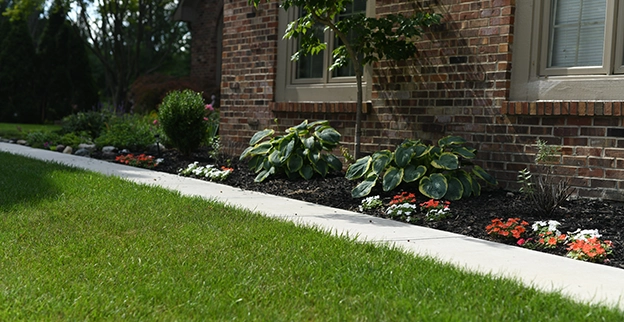
Fall is the season of recovery and preparation in lawn care. After months of summer stress, your lawn needs the right treatments to strengthen its roots, eliminate weeds, and prepare for winter. Whether you're wondering what to put on your lawn in the fall, how to control weeds before winter, or when to schedule aeration, this guide is your complete resource for effective fall lawn care.
Assess Your Lawn’s Condition Before Fall Treatments
Before diving into fall yard care, take stock of your lawn’s health. Look for signs of soil compaction, thinning grass, and bare patches. Summer heat, foot traffic, and drought conditions can leave your lawn stressed and more vulnerable to weeds and disease.
If your lawn feels hard underfoot or water tends to pool on the surface, it’s a strong sign that aeration is needed.
Core Aeration: Loosen Compacted Soil for Stronger Roots
Aeration is one of the most beneficial fall lawn treatments you can schedule. It reduces soil compaction, improves nutrient absorption, and encourages deeper root growth. Core aeration removes small plugs of soil, allowing water, air, and nutrients to reach your grassroots.
For the best results, schedule aeration between mid-August and early November, when soil temperatures are still warm and root growth is active.
Overseeding: Fill in Bare Spots and Outcompete Weeds
Fall is the ideal time to overseed your lawn. Cooler temperatures, warm soil, and consistent rainfall provide perfect germination conditions. Overseeding helps thicken your turf, crowd out weeds, and restore any bare or thinning areas.
Use a high-quality seed blend suited to your region’s climate. When paired with aeration, overseeding delivers noticeable results in just a few weeks.
Fertilize Your Lawn in the Fall
Wondering what to put on your lawn in the fall? Fertilizer should be at the top of your list. A properly timed fall feeding strengthens root systems and sets the stage for an early spring green-up.
We recommend using a slow-release fertilizer that supports long-term root development without promoting excessive top growth. It’s an essential part of our 7-Application Lawn Care Program.
Apply Weed Control While Weeds Are Still Active
Fall weed control targets broadleaf weeds while they’re storing nutrients for winter. This makes treatments more effective and reduces weed pressure in spring.
However, avoid herbicides if you've recently overseeded. For existing lawns, weed control services provide seasonally appropriate applications tailored to your lawn’s condition.
Mowing and Leaf Removal Tips
Keep mowing your lawn until it stops growing—usually after the first frost. Maintain a height of about 2.5 to 3 inches to prevent matting and disease during winter.
As leaves begin to fall, remove or mulch them regularly. A thick layer of leaves can block sunlight, trap moisture, and smother your grass.
Watering in Fall: Yes, It Still Matters
Fall is no time to let up on watering, especially if you’ve recently seeded. Grass roots continue growing well into late fall, and consistent moisture supports that development.
Adjust your watering schedule as temperatures drop. Visit our watering guide for recommendations on timing, frequency, and best practices.
Boost Your Results With Lawn Pride’s Fall Services
Want professional results without the hassle? Request your free quote today. Lawn Pride’s fall services are backed by decades of local expertise. From grub control to fungicide treatments, we offer a full suite of seasonal services that protect and enhance your lawn.
Our 7-Application Program includes targeted fall treatments, ensuring your grass gets exactly what it needs at the right time.
Serving Neighborhoods Across Central Indiana
We proudly provide fall lawn maintenance throughout the greater Indianapolis area, including:
See the full list of cities we serve.
Fall lawn care FAQs
When should I start fall lawn care?
Mid-August through early November is ideal for aeration, seeding, fertilization, and weed control.
What is the best fall lawn treatment?
Aeration and overseeding combined with a balanced fertilizer application offer the most impact.
Can I still water my lawn in the fall?
Yes. Even as temperatures drop, your lawn needs water to support root growth and new seedlings.
Do I need to rake all my leaves?
It’s best to mulch or remove them. A thick layer of leaves can suffocate your grass.
Is fall too late to fix my lawn?
Not at all. Fall is the most effective time to improve lawn health for next spring.
